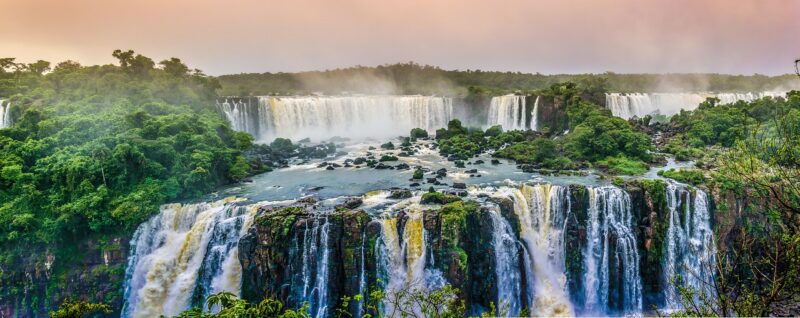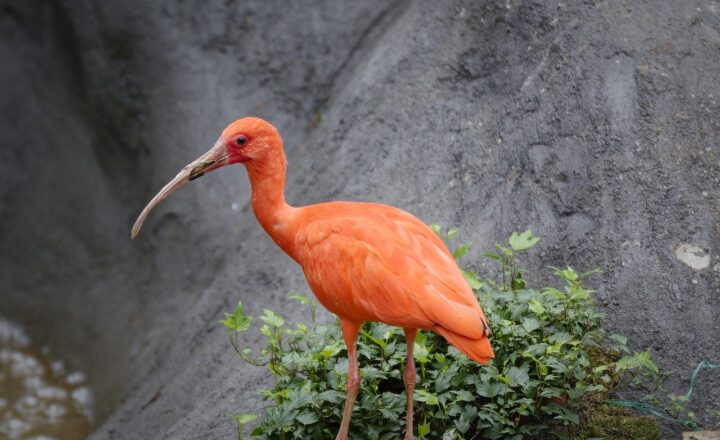Exploring How Zoos Recreate Rainforest Environments for Tropical Species
November 12, 2024

Rainforests are some of the most biodiverse ecosystems on the planet, hosting an array of flora and fauna that can’t be found anywhere else. With increasing threats such as habitat loss and climate change, zoos play a pivotal role in conserving these unique environments and the species that inhabit them. This article explores how modern zoos work to recreate rainforest environments, ensuring the wellbeing of tropical species while also educating the public about these critical habitats.
1. The Importance of Rainforest Ecosystems
Rainforests cover about 6% of the Earth’s surface and are home to more than half of the world’s plant and animal species. These ecosystems provide numerous benefits, including:
- Climate Regulation: Rainforests play a critical role in regulating the Earth’s climate by absorbing carbon dioxide and producing oxygen.
- Biodiversity Hotspots: With countless species that are often not found anywhere else, rainforests are essential for maintaining global biodiversity.
- Medicinal Resources: Many pharmaceuticals are derived from compounds found in rainforest plants, highlighting the importance of these ecosystems in medical research.
Due to deforestation and other human activities, rainforests are disappearing at an alarming rate. Zoos can help address this issue by creating habitats that mimic the natural environment of tropical species.
2. Designing Rainforest Exhibits
Creating a rainforest exhibit involves a thoughtful process that ensures the needs of the animal inhabitants are met while also simulating a natural environment. Here are key elements involved in designing rainforest exhibits:
a. Landscaping and Plant Selection
A successful rainforest habitat features diverse plant species that provide shelter, food, and enrichment for the animals. Zoos often collaborate with horticulturists and ecologists to choose native plants that will thrive in the exhibit’s climate conditions. Plant layering, which replicates the multiple canopy levels found in natural rainforests, is also utilized to create a complex environment that encourages climbing and exploration.
b. Climate Control
Rainforests are characterized by high humidity and temperatures that can sometimes reach sweltering levels. To recreate these conditions within zoo exhibits, advanced climate control systems are implemented, including:
- Heating for warmth during cooler seasons
- Misting systems to increase humidity levels and provide fresh water
- Ventilation systems to ensure adequate air circulation and prevent the buildup of harmful pathogens.
c. Water Features
Waterfalls, streams, and ponds are integrated into rainforest exhibits to replicate the essential water sources found in natural habitats. These features not only serve aesthetic purposes but also encourage natural behaviors such as bathing and foraging in species like birds, monkeys, and amphibians.
3. Animal Enrichment and Welfare
Ensuring the physical and psychological welfare of zoo animals is fundamental. Zoos implement enrichment strategies to allow animals to exhibit natural behaviors. Techniques include:
- Behavioral Enrichment: This encompasses a range of activities that stimulate animal behavior, such as using food puzzles, climbing structures, and hidden treats within the exhibit environment.
- Sensory Enrichment: Incorporating various scents, sounds, and visual stimuli helps maintain the animals’ mental engagement, as they interact with their environment in ways similar to their wild counterparts.
- Social Structures: Understanding the social dynamics of tropical species is crucial to creating suitable groupings within the exhibit. This ensures that animals can live in appropriate social groups, similar to those found in the wild.
The ultimate goal is to create environments where animals can thrive emotionally and physically, staying active and displaying natural behaviors.
4. Conservation and Education Initiatives
Zoos are not only about showcasing animals but also play a significant role in conservation efforts. The education aspect is crucial in raising awareness about rainforest preservation. Here are some initiatives that zoos typically undertake:
a. Breeding Programs
Several zoos focus on breeding endangered tropical species as part of species recovery plans. These programs allow species to be reintroduced into their natural habitats while also maintaining genetic diversity in captive populations.
b. Education Programs
Zoos leverage their exhibits to educate the public about the significance of tropical ecosystems and the threats they face. This is achieved through:
- Interactive displays that explain ecosystem relationships
- Workshops and lectures on conservation strategies
- Collaborations with schools for field trips and educational presentations
Through these programs, zoos encourage visitors to take action in their everyday lives to protect rainforests, advocating sustainable practices and responsible consumption.
5. Challenges in Replicating Rainforest Environments
While zoos have made progress in replicating rainforest environments, several challenges persist:
- Space Constraints: Many zoos are limited in space, making it difficult to create expansive and complex habitats that accurately represent the vastness of a rainforest.
- Species-Specific Needs: Different species have unique habitat requirements, which can complicate the design of multi-species exhibits. Zoos must carefully consider compatibility and territorial needs to prevent stress and aggression among animals.
- Financial Resources: Designing and maintaining high-quality exhibits can be costly, requiring ongoing financial support from sources like grants, donations, and admission fees.
Despite these challenges, zoos remain dedicated to their mission of conservation and education, continually finding innovative solutions to enhance their rainforest exhibits.
Conclusion
As guardians of biodiversity, zoos are at the forefront of efforts to preserve rainforest environments and the charismatic species that dwell within them. By incorporating advanced designs, welfare-focused strategies, and conservation initiatives, modern zoos are not just places of entertainment but vital resources in the global conservation landscape. By educating visitors and promoting conservation, they foster a connection between people and the natural world, inspiring future generations to advocate for the preservation of these irreplaceable ecosystems.
With ongoing research and collaboration, the efforts of zoos in recreating rainforest environments continue to evolve, ensuring a brighter future for tropical species both in captivity and in the wild.








